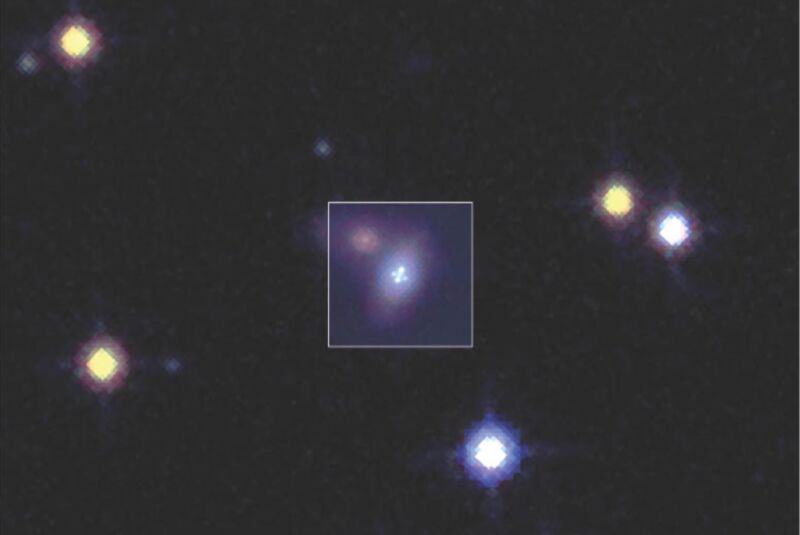
Astronomers have detected a previously unknown supernova explosion more than 4 billion light-years away using a rare phenomenon called "gravitational lensing," which serves as a kind of cosmic magnifying glass. They described their discovery and its potential implications in a new paper published in the journal Nature Astronomy. Co-author Ariel Goobar, director of the Oskar Klein Center at Stockholm University, described the find as "a significant step forward in our quest to understand the fundamental forces shaping our universe."
Gravitational lensing is a direct consequence of the general theory of relativity: mass bends and warps spacetime, and light must follow that curvature. The phenomenon can form rare effects like an "Einstein ring" or an "Einstein cross." Essentially, the distortion in space-time caused by a massive object (like a galaxy) acts as a lens to magnify an object in the background. Since these aren't perfect optical-quality lenses, there are often some distortions and unevenness. This causes the light from the background object to take different paths to Earth, and thus a single object can appear in several different locations distributed around the lens. At cosmological scales, those paths can also require light to travel very different distances to get to Earth.
Gravitational lensing helps astronomers spot celestial objects that might otherwise be too faint or far away to see, like a distant supernova, which can lead to other interesting questions. For example, last year, astronomers analyzed a Hubble image from 2010, where the image happened to also capture a supernova. Because of gravitational lensing, the single event showed up at three different locations within Hubble's field of view. Thanks to the quirks of how this lensing works, and because light travels at a finite speed, all three of the locations captured different times after the star's explosion, allowing researchers to piece together the time course following the supernova, even though it had been observed over a decade earlier.
This latest paper centers on a newly discovered supernova dubbed SN Zwicky, detected at the Zwicky Transient Facility (ZTF). The ZTF is a robotic camera attached to the 70-year-old Samuel Oschin telescope at the Palomar Observatory in San Diego County. ZTF performs robotic surveys of the night sky, looking for objects that erupt or vary in brightness: supernovas, stars being munched on by black holes, and asteroids and comets, for example. It scans the entire sky over three nights and the visible plane of the galaxy twice every night.
Astronomers quickly tagged the object as being of interest because it was so unusually bright. Then they relied upon the adaptive optics instruments at three other telescopes—the W.M. Keck Observatory, the Very Large Telescope, and the Hubble Space Telescope—to view four images of the object from different positions in the sky. This confirmed that the supernova's unusual brightness was a product of gravitational lensing.
Reader Comments (15)
View comments on forumLoading comments...